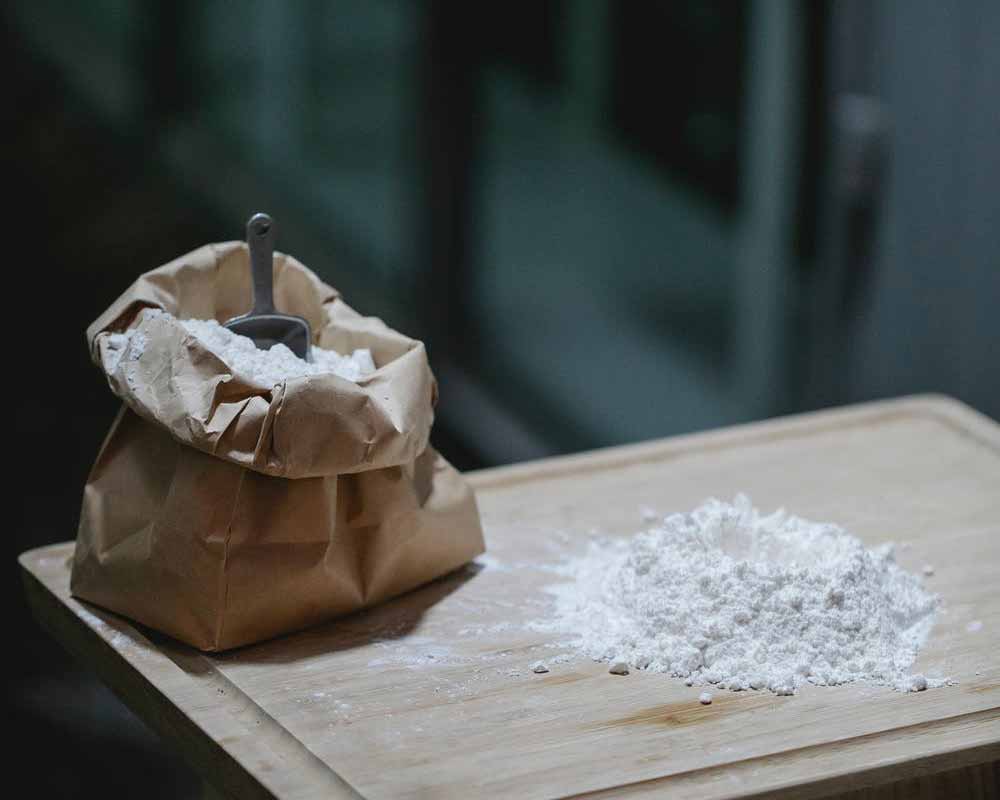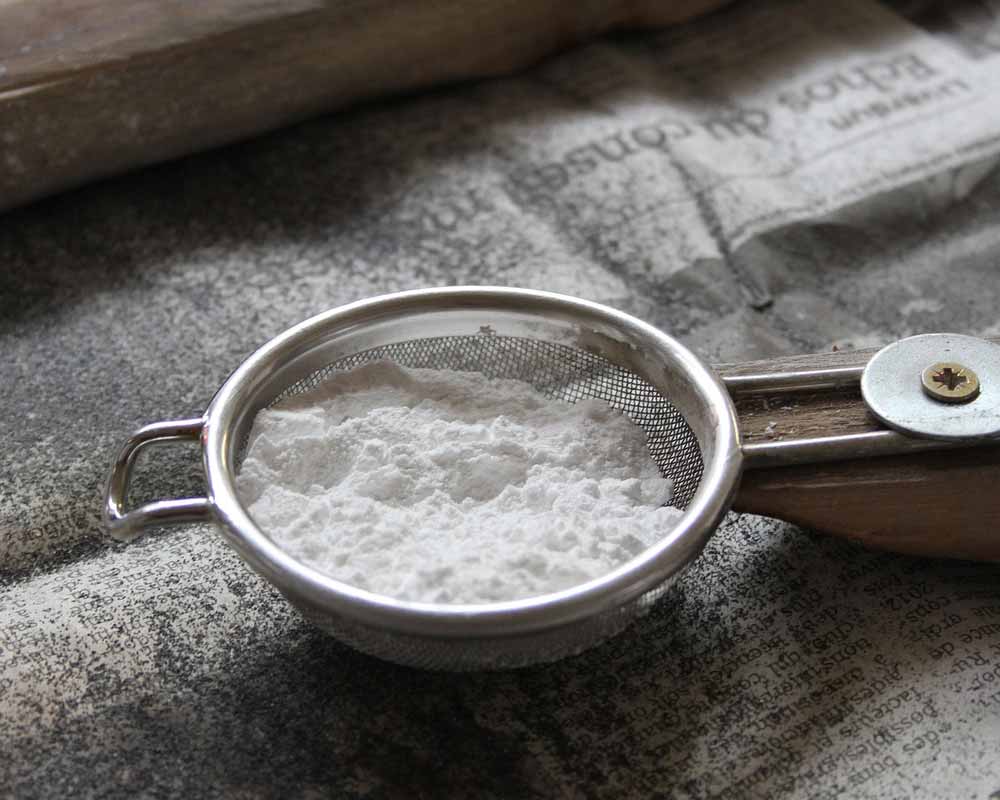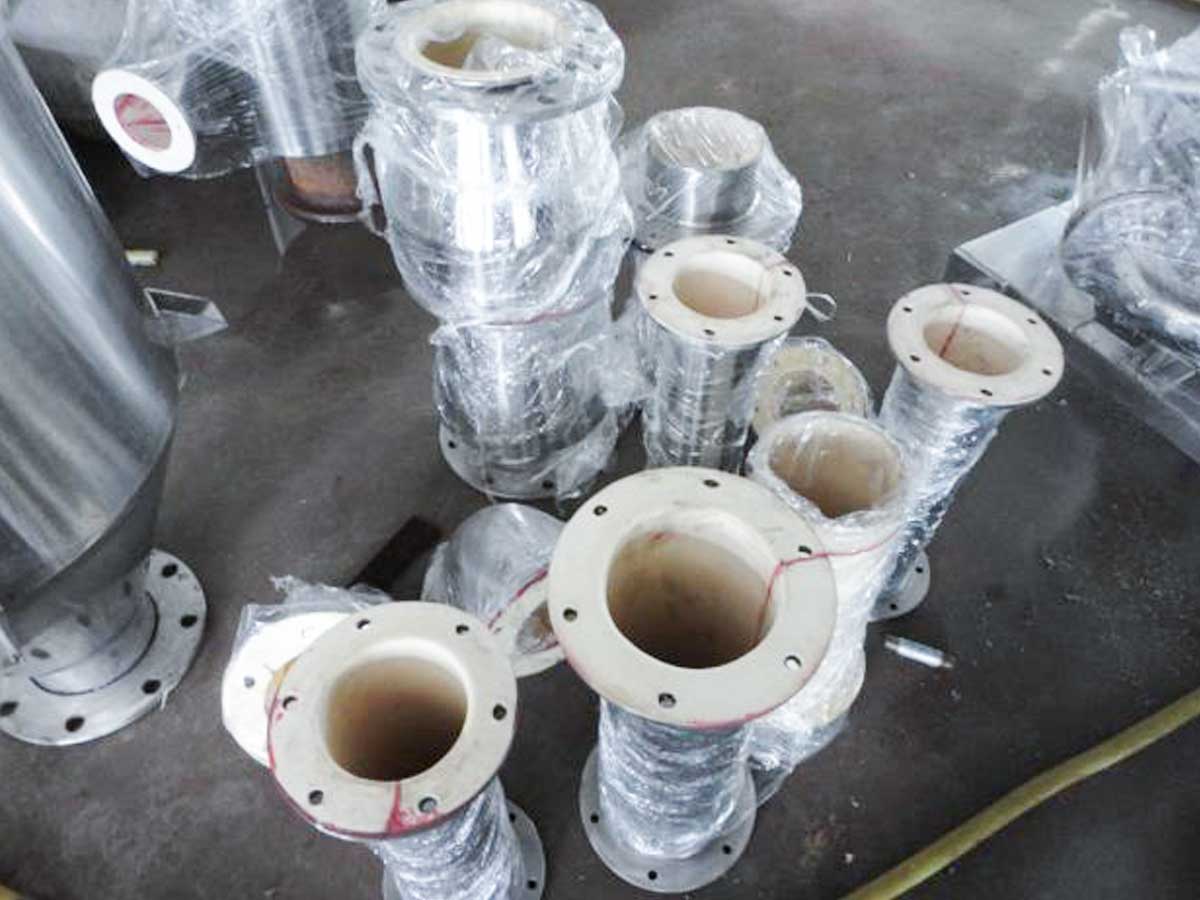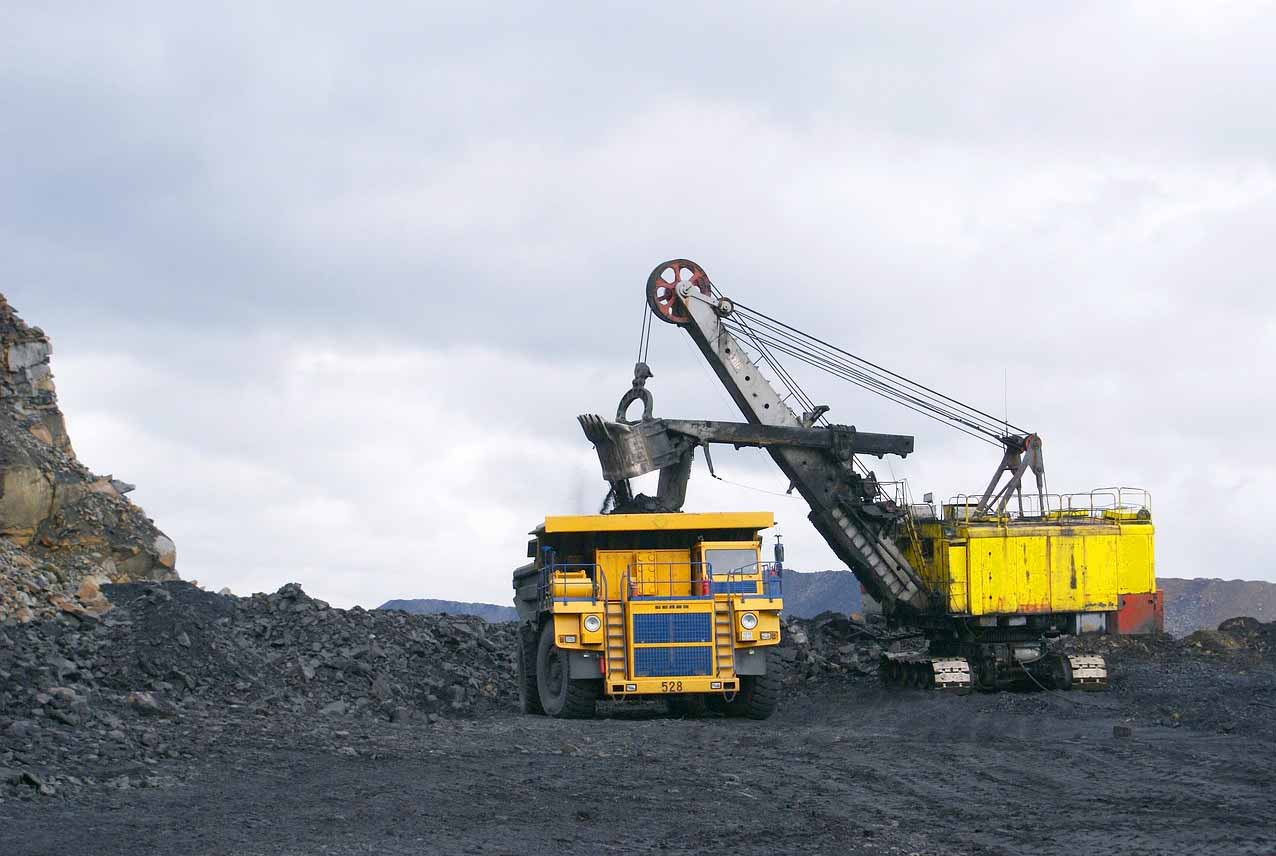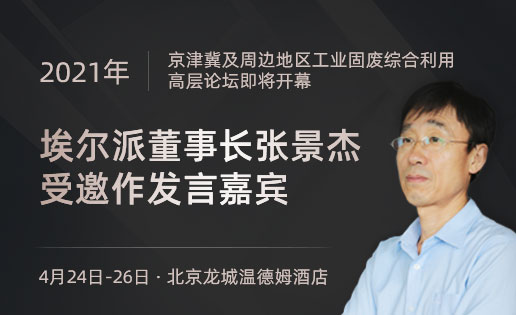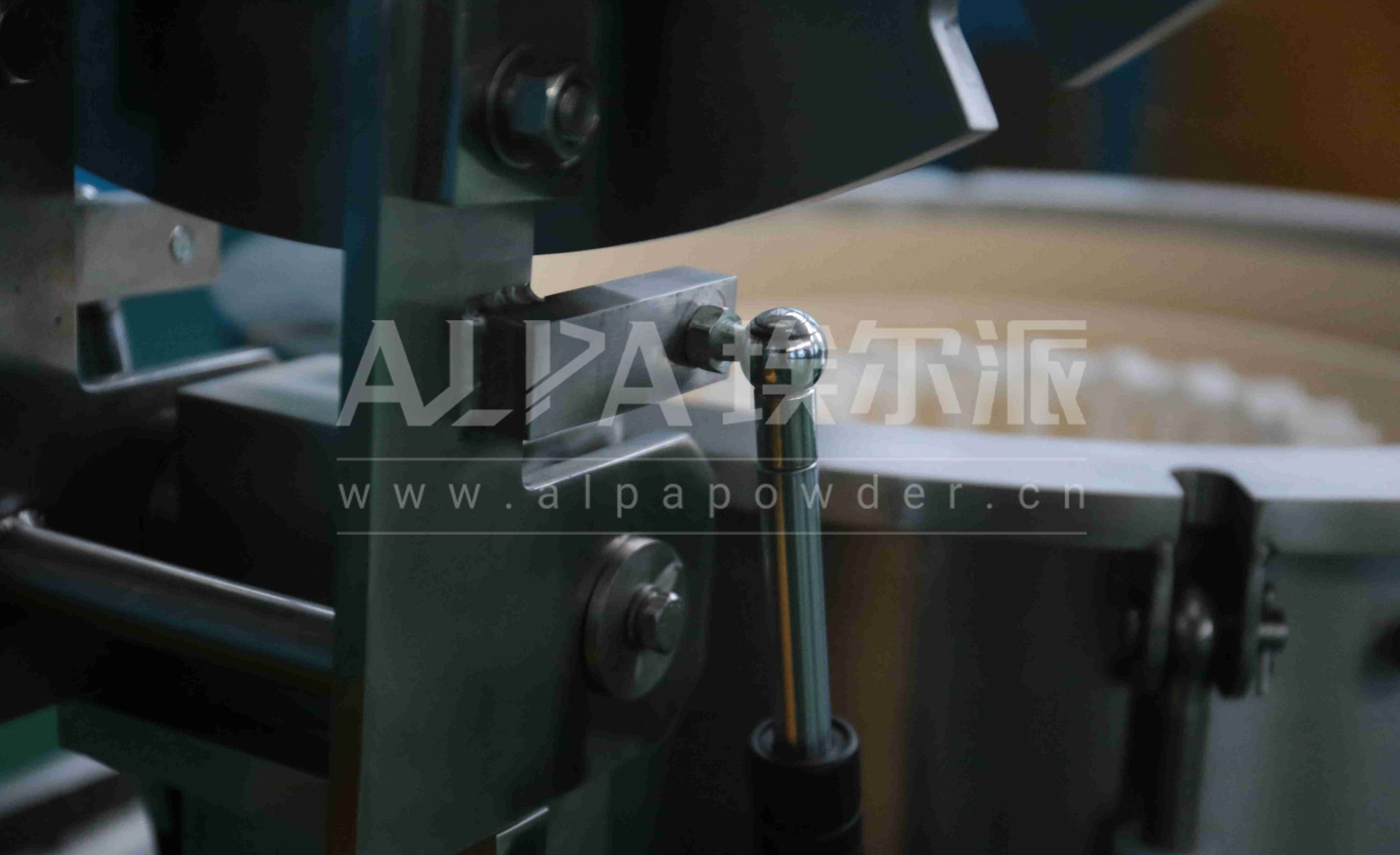What factors are related to the surface modification effect of ultrafine powder?
Powder surface modification is mainly to reduce the energy of ultra-fine powder to achieve uniform dispersion. The effect of powder surface modification depends on powder processing technology, back-end product processing technology and system compatibility, material formulation, etc. Factors are related.
- The nature of powder raw materials
The specific surface area, particle size, particle size distribution, specific surface energy, surface physical and chemical properties, and agglomeration of the powder raw materials all have an impact on the modification effect, which is one of the important factors in the selection of powder modifier formulations, process methods and equipment.
For example, the physical and chemical properties of the surface of the powder, such as surface electrical properties, wettability, functional groups or groups, dissolution or hydrolysis characteristics, directly affect its interaction with the powder modifier molecules, thereby affecting the effect of its surface modification . At the same time, the physical and chemical properties of the surface are also one of the important factors in choosing the surface modification process.
- Powder modifier formula
The surface modification of the powder is to a large extent achieved by the action of the powder modifier on the surface of the powder. Therefore, the formula (variety, dosage and usage) of the powder modifier has an important influence on the modification effect of the powder surface and the application performance of the modified product. The powder modifier formula is very specific, that is, it has the characteristics of "a key to open a lock". The formula of powder modifier includes selection of varieties, determination of dosage and usage, etc.
When selecting a powder modifier, the properties of the powder raw materials, the use or application field of the product, as well as factors such as process, price and environmental protection should be considered comprehensively, and according to the structure and properties of the powder modifier and its relationship with the powder Mechanism of action, targeted selection.
- Superfine surface modification process
After the powder modifier formula is determined, the surface modification process is one of the important factors affecting the surface modification effect. The surface modification process should meet the application requirements or application conditions of the powder modifier, have good dispersibility to the powder modifier, and be able to achieve uniform and firm coating of the powder modifier on the powder surface; at the same time, the process is required Simple, good parameter controllability, stable product quality, low energy consumption and low pollution.
Therefore, at least the following factors should be considered when choosing a surface modification process:
①The characteristics of the powder modifier, such as water solubility, hydrolysis, boiling point or decomposition temperature, etc.;
②Whether the front-stage crushing or powder preparation process is wet or dry? If it is a wet pulverization process, a wet modification process can be considered;
③Surface modification method. The method determines the process. For example, for surface chemical coating, either dry or wet process can be used; but for precipitation coating of inorganic powder modifier, only wet process can be used.
At present, the commonly used surface modification processes mainly include dry process, wet process, pulverization and surface modification combined into one process, drying and powder modifier use methods combined into one process, etc.
Why do we need ultrafine grinding?
Ultrafine grinding is a high and new technology that has developed rapidly in the past 20 years. It is one of the most important technologies for fine powder processing. With the development of modern high-tech and new material industries, ultrafine grinding technology can process raw materials into micrometers. Even nano-level ultra-fine powders are widely used in high-end fields such as high-end coatings, medicine, high-tech ceramics, microelectronics and information materials, advanced refractory and thermal insulation materials, fillers and new materials.
Ultra-fine powders are usually divided into micron, sub-micron, and nano-level powders. The powder with a particle size greater than 1μm is at the micron level, and the powder with a particle size of 0.1-1μm is at the sub-micron level, and the particle size is 0.001-0.1μm. The μm powder is of nanometer level. Due to the different levels of scientific research and technology in various countries, there is still no strict unified definition of ultrafine grinding so far. Generally, the grinding of ultrafine powders with a particle size of 0.1-10μm and the corresponding classification technology are called ultrafine grinding. Superfine grinding and superfine grades are difficult problems in powder deep processing, and they are also the key to powder technology.
The performance of ultra-fine powder is very different from that of ordinary particles. When the size of the particles reaches the sub-micron level, especially the nano-level, the atomic arrangement and electronic distribution structure and crystal structure of the surface have obvious changes compared with ordinary particles. In addition to the surface effects, small size effects, quantum effects and quantum tunneling effects that are different from ordinary particles, it will have excellent physical, chemical, surface and interface properties in some special occasions.
When the particle size is in the micron level, although its physical and chemical properties are not much different from the physical and chemical properties of ordinary particles, the specific surface area and surface energy of micron-level particles are large, and the surface and interface properties have undergone great changes. E.g:
- After ultrafine grinding, when medicines, foods, nutrition products and cosmetics reach the micron level, they are very easy to be absorbed by the human body or skin, and the efficacy is significantly improved;
- After the particles in the paint, paint, and dye reach the micron level, the surface activity is improved, the interface characteristics are improved, and the adhesion, uniformity and surface gloss after crushing are greatly improved;
- After the cement is superfinely pulverized, the surface activity of the particles is increased, and the strength is improved;
- As the particles are refined, the surface energy is improved, and the sintering temperature of ultra-fine powder ceramic or metal is greatly reduced.
If the physical and chemical properties of a single micron-sized ultrafine powder are not much different from those of ordinary particles, then the combination of a variety of ultrafine particles with different properties is different. When they are made into composite materials, Its properties are often completely different from raw materials, such as lower melting point, increased chemical activity, and increased catalytic effect.
Ultrafine grinding technology is extremely important for the development of modern high-tech new materials industry. In order to meet the requirements of related application fields for ultra-fine, narrow distribution and mass production of powder materials, the focus of future development of pulverization and classification technology will be It is superfine grinding and fine classification technology.
Three major trends in the development of heavy calcium carbonate industrial technology
Heavy calcium carbonate is ground from natural carbonate minerals such as calcite, marble, limestone, etc. It is an important non-metallic mineral material that is environmentally friendly, energy-saving and emission-reducing, and conforms to the country's sustainable development. It has obvious reinforcing and whitening effects. And the advantages of impact resistance, easy processing, non-toxic, harmless and low cost.
The heavy calcium carbonate industry has developed rapidly in China and has become an important industry in the non-metallic mining industry. In the past 10 years, the world's annual production capacity of heavy calcium carbonate has grown at an average growth rate of 5% to 8%, while the average annual growth rate of China's heavy calcium carbonate can reach 10%.
On the whole, the main development trend of heavy calcium carbonate industrial technology is large-scale, functional and intelligent. This is the intensification, stabilization, structural optimization or specialization of heavy calcium carbonate production, as well as improving production efficiency and reducing energy consumption. , Abrasion and the inevitable requirements of reducing production costs are also inevitable requirements for the development of production technology for the significant increase in market demand and the saving of the amount of resin in polymer-based composite materials.
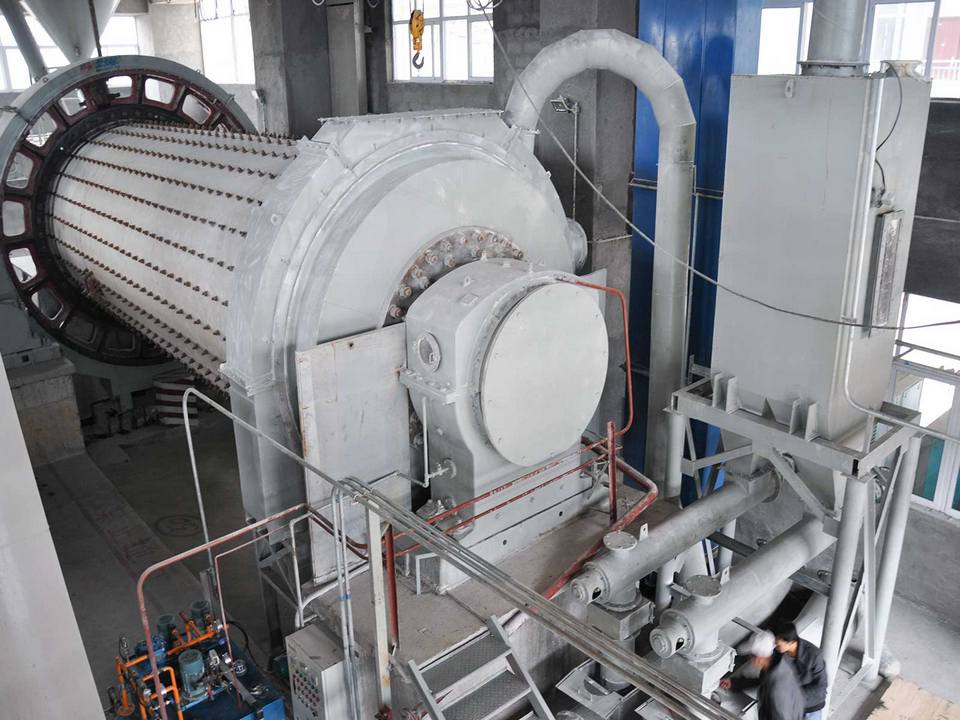
- Large-scale
Large-scale production mainly means that the production capacity of a single production line will continue to increase. The large-scale production line will drive the development of large-scale crushing equipment, large-scale classification equipment (especially dry fine classification equipment), surface modification equipment (especially continuous surface modification equipment) and corresponding drying and packaging equipment. Starting from the end of the "Twelfth Five-Year Plan", China will build more and more single heavy calcium carbonate and superfine heavy calcium carbonate production lines with an annual output of more than 200,000 tons, and a single dry surface modification with an annual output of more than 50,000 tons. Sexually activated heavy calcium carbonate and superfine heavy calcium carbonate production line.
- Functionalization
Functionalization means that the application performance of the product will be continuously optimized to meet the needs of the market, and it is a value-added technology that enhances the application performance and value of heavy calcium carbonate. The main processing technology to improve the functionality of heavy calcium carbonate products is surface modification and fine grading.
Surface modification reduces the oil absorption value of the product, improves the compatibility of heavy calcium carbonate with organic resin and the dispersibility in the resin, can increase the filling amount of heavy calcium carbonate and reduce or save the filling of polymer materials The amount of resin has huge market demand and is one of the main production technologies for special heavy calcium carbonate products.
Fine grading technology can improve the application performance of heavy calcium carbonate in inks, coatings and other fields. It is one of the important production technologies for special heavy calcium carbonate products.
- Intelligent
Intelligentization refers to the optimization of production management and control. The intelligentization of production line control will be one of the main development trends of calcium carbonate production technology in the future. Large-scale production and increased requirements for reliable and stable product quality, rising labor costs and scarcity of skilled workers will promote the continuous development of intelligent control of heavy calcium carbonate production lines.
Ceramic pulverizer, pollution-free production of ultra-fine powder materials
For traditional pulverizers, materials are pulverized through shearing force, squeezing force, impact force and grinding force. The crushed material needs to be in direct contact with the grinding body or grinding medium. Most grinding bodies are made of various metal materials, and metal impurities will inevitably be introduced during the grinding process. Therefore, in the fields of lithium battery materials, medicines, health products, and foods that require pollution-free crushing treatment, the application of mechanical crushers is greatly restricted. If you want to use a mechanical shredder in an industry without magnetic pollution, you need to design a shredder. During the grinding process, the part in contact with the material must be a ceramic structure. In the study of the crushing process of lithium battery materials, we developed and produced ceramic mechanical ultra-fine crushers according to customer needs. The whole equipment system has high integration, low fine powder rate, high yield, good particle shape, strict control of large particles, and is deeply loved by users of lithium battery materials.
In addition, because of their special material properties, some materials may adhere during the crushing process, leading to material blockage or agglomeration, which brings considerable trouble to the crushing work. After long-term accumulation of experience and continuous innovation and improvement, the ceramic-lined jet mill is launched for the phenomenon of material adhesion.
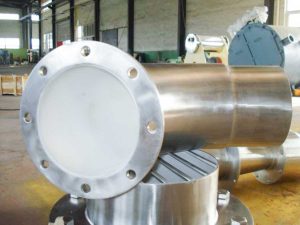
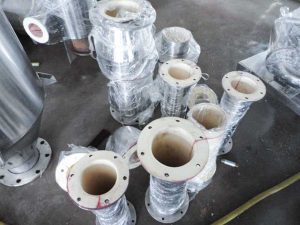
The fluidized bed jet mill that uses high-hardness engineering ceramics to make all flow-through parts is made of high-hardness brittle materials, elastic plastic materials, agglomerated materials, and fibrous materials, such as zircon, alumina, rutile, titanium dioxide, and zirconia. It is an ideal crushing equipment for crushing materials such as, talc, kaolin, graphite, paint, pesticides, fertilizers, pollen, and food raw materials. Ceramic-lined jet mill not only has the advantages of general fluidized bed jet mills, but also, because the machine's lining is made of high-strength, wear-resistant and high-temperature engineering ceramics, it can not only adapt to high temperature and overheating up to 400℃ The steam working medium does not pollute the material to be pulverized. It is a necessary equipment for high-quality ultra-fine pulverization. At the same time, the cost of airflow ultra-fine pulverization is mainly the cost of the pulverizing working medium, and the superheated steam working medium is higher than the compressed air working medium The cost is reduced by a quarter. In addition, the superheated steam working fluid will not generate static electricity, so there will be no wall sticking phenomenon. Therefore, it is suitable for using compressed air to crush some materials that will stick to the wall at room temperature, such as: the production of titanium dioxide .
The ceramic-lined jet mill is mainly composed of a feeding device, a crushing chamber, a discharge port, a steam distribution pipe and a nozzle. The material of the feed nozzle and the crushing nozzle are made of high-strength wear-resistant and high-temperature special alloy, and the nozzle structure is supersonic design; the rest of the flow parts are lined with high-strength wear-resistant and high-temperature engineering ceramics, and the feed venturi tube , The ceramic middle ring, the lining of the discharge port, the ceramic upper cover and the ceramic lower cover are made of high-strength reaction sintered silicon carbide; the steam distribution pipe and the main body jacket and other parts are made of stainless steel and polished, and the appearance of the whole machine is beautiful and compact. The ceramic-lined jet mill can be used in conjunction with the jet classifier. According to the physical characteristics of the material and the purity requirements of the finished product, ceramic sheets are lined inside the equipment to increase wear resistance, reduce the impact of materials on the equipment, and increase the use of the equipment Life, and accurately control the iron content of the material in the crushing and grading process. Successfully solved a series of problems such as the adhesion of battery materials, poorly made, and inaccurate classification.
The ceramic-lined jet mill has the following performance advantages:
- It is suitable for dry pulverization of various materials with Mohs hardness below 9, especially suitable for the pulverization of materials with high hardness, high purity and high added value.
- The breakthrough of particle acceleration technology has greatly improved the pulverization efficiency, reduced the energy consumption, the over pulverization is small, the particle shape is good, the particle size distribution is narrow and there are no large particles.
- During the crushing process, the airflow temperature is reduced due to the rapid expansion of the airflow, which is especially suitable for the crushing of heat sensitive, low melting point and volatile materials.
- The crushing of materials by collision with each other is different from the mechanical crushing which relies on the impact crushing of the materials such as blades or hammers, plus a full range of ceramic lining, so the equipment is less abraded and the product purity is high.
- It can be used in series with a multi-stage air classifier to produce products with multiple particle sizes at one time.
- The ceramic-lined jet mill has a compact structure, easy to disassemble and clean, and the inner wall is smooth and has no dead corners.
- The entire system runs in a closed vacuum with no dust, low noise, and the production process is clean and environmentally friendly.
For ultra-fine grinding of non-metallic minerals, the choice of grinding equipment is crucial
For the processing of non-metallic minerals, one is to remove impurities and improve the purity of the product; the other is to reduce the particle size of the product to varying degrees. In the process of reducing the particle size of the product, the choice of grinding equipment is very important, which directly affects the utilization rate of minerals, production costs, product quality and economic benefits.
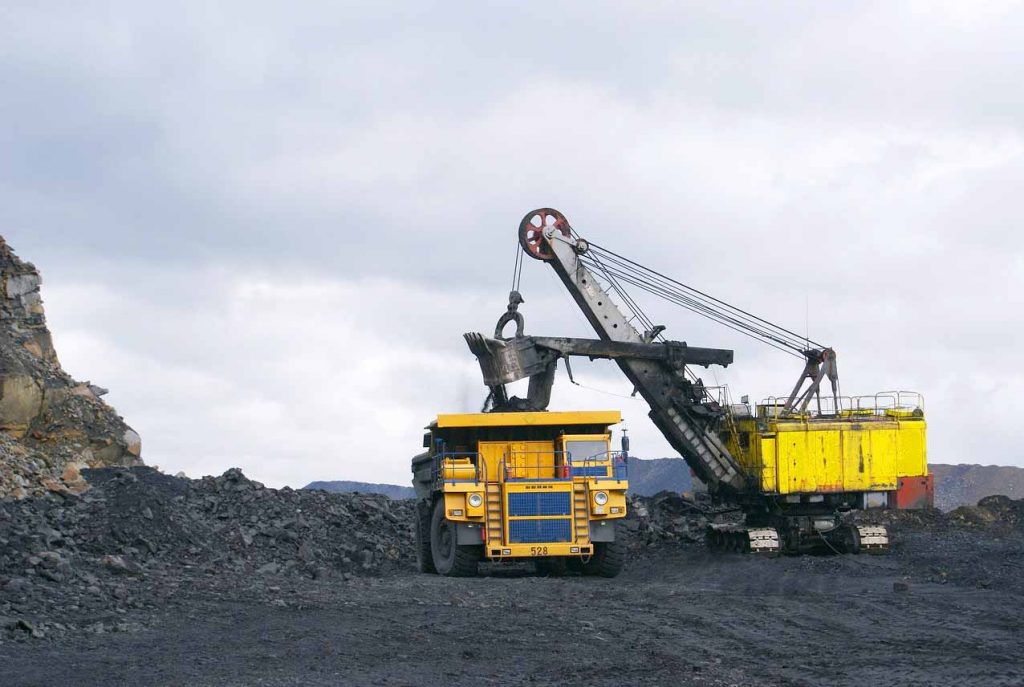
Faced with so many grinding equipment on the market, non-metallic mining companies generally need to consider the following aspects when choosing:
- Raw material hardness
The hardness of raw materials is the basis of equipment selection, and it is related to the investment in many aspects such as equipment mainframe, auxiliary equipment, capital construction investment, operating cost and so on.
If the Raymond mill is used to process ultra-fine quartz powder, a pressurized (hydraulic or mechanical) system is required to apply sufficient pressure to crush. The increase in pressure increases the manufacturing cost and operating cost of the equipment, especially the reliability of the grinding rollers and grinding discs. The performance is greatly reduced, the failure rate of the pressurization system increases, and the equipment shutdown and maintenance costs rise sharply.
- Product fineness and particle shape
Product particle size and its distribution and product particle shape are one of the most basic and important indicators in the industrial application of non-metallic mineral products. Product fineness and particle size distribution depend on the classification equipment, and the particle shape is inseparable from the grinding method.
If the raw materials are non-metallic minerals below medium hardness, such as talc, marble, kaolin, bentonite, feldspar, etc., the product fineness is required to be about 104-38μm (150-400 mesh), and Raymond mill or eddy current mill can be used , Vertical mill, hammer mill, vibration mill, ball mill, roller mill, etc. Under normal circumstances, there is no need to install an additional air classifier.
If the fineness of the product is below 38μm (above 400 mesh), in addition to choosing fine-grained grinding equipment, such as Raymond mill, vertical mill, vibration mill, ball mill, rotary mill, etc., it is also necessary to choose airflow classifier and The mill is matched, otherwise it is difficult to meet the requirements of product fineness and gradation.
When choosing a classifier, in addition to considering product fineness, classification efficiency and unit product energy consumption, it is also necessary to match the mill in terms of processing capacity and air consumption.
For some non-metallic minerals, such as graphite, talc, kaolin, wollastonite, etc., maintaining the flaky or needle-like particle shape helps to improve its application performance and use value. Therefore, when choosing grinding equipment for these minerals, the particle shape must also be considered.
For example, if the ultra-fine powder product requires the shape of a polygonal body, the grinding operation should be avoided as much as possible during the processing, and equipment that produces appropriate extrusion and impact effects should be selected, and it is better to be crushed in multiple stages.
It is impossible to process ultrafine powders with high sphericity requirements by high-speed impact, because particles with high sphericity require grinding processing methods.
What equipment is used to control the fineness and grain shape, whether it is through a one-stage grinding or a multi-stage grinding, and how reasonable the crushing ratio is set for each crushing grinding, etc., greatly affect the total investment.
- Product purity
Many downstream applications have certain requirements for metal oxides such as iron oxide and titanium oxide and whiteness indicators of non-metallic mineral powder products. Therefore, handling impurities is the biggest difficulty in non-metallic mineral processing, and it is also difficult to solve in the total investment. problem.
When selecting mills and classifiers, the wear and material of the equipment must be considered. If necessary, strict isolation measures should be taken at all parts of the equipment in contact with the material. Isolation methods, equipment, insulation materials used and their costs are not a small number, and they all need to be carefully considered.
- Product variety and output
Where possible, it is best to use a process production (process) line, which requires comparison of the optional grinding equipment that can achieve the product fineness, and on the basis of comparison, select a large-scale equipment that can meet the output requirements of a single equipment . Because in general, the fewer production lines, the more convenient it is to manage. Compared with multiple small devices, the unit product energy consumption and production cost of a single large device are lower.
In addition, if there are many varieties of products and one equipment cannot be used for smashing and processing alternately at the same time, it is necessary to consider multiple (sets) of process equipment.
- Energy consumption per unit product
Energy consumption is an important part of product cost. Regarding the choice of energy consumption and equipment, we can consider both the product properties of non-metallic mineral ultra-fine powder and the utilization rate of minerals.
Three factors are involved:
Mineral properties and crushing ratio, crushing method and crushing ratio, crushing method and energy utilization rate.
- Operating cost
Operating costs are often overlooked by investors. According to the system composition and working principle of the equipment, the actual situation of wearing parts, consumable materials and moving parts should be understood in detail, such as: reliability, life, cost, maintenance time, replacement method, degree of automation, knowledge requirements of operators, etc. , So as to determine the choice of equipment and calculate the investment cost.
For example, the nozzle components and clean air supply in the jet mill host must be specifically listed and calculated. The one-time use of the clean air source increases a lot of operating costs.
- Infrastructure investment
The cost of capital construction mainly includes the basic characteristics of the equipment, such as the material characteristics of the excavation foundation, the construction and management of the bearing foundation, the occupied area, the height and span of the plant, and the building materials. For example: the original supply of jet mill is supplied by special equipment compressor, and its basic requirements are high in cost. All these should make investors consider carefully.
To deal with the ultra-fine grinding of non-metallic minerals in actual production, we should try our best to study and adopt a reasonably optimized process. The optimized process proposes and determines the performance requirements of mechanical equipment. The equipment manufacturer can fully meet the process Required equipment. This customized non-standard equipment can obtain the best product performance and economic benefits. Although the investment cost has increased slightly, the overall benefit is far beyond the result of equipment selection.
Taking a step back, the manufacturer's equipment should be modified to meet its own requirements, and the process requirements should not be easily changed to adapt to the performance of the equipment that has been finalized. It is the best choice to optimize the parameters in accordance with the process and let the manufacturer provide a complete set of equipment, so that the best working condition and the benefits of high-quality products can be obtained.
The working principle and main purpose of jet mill
With the rapid development of superfine powder related industries, fluidized bed jet mills, which are widely used in various industries due to their special properties, will surely become an important member and focus of non-metallic industrial machinery and equipment. research direction.
Jet mill, also known as jet mill/mill, jet mill, jet mill, spiral jet mill, jet mill, micro jet mill, fine jet mill. Compared with impact mills, jet mills are widely used due to their large production capacity, high degree of automation, fine product particle size, narrow particle size distribution, high purity, high activity, and good dispersion, etc., especially suitable for harder ones. Materials and special materials.
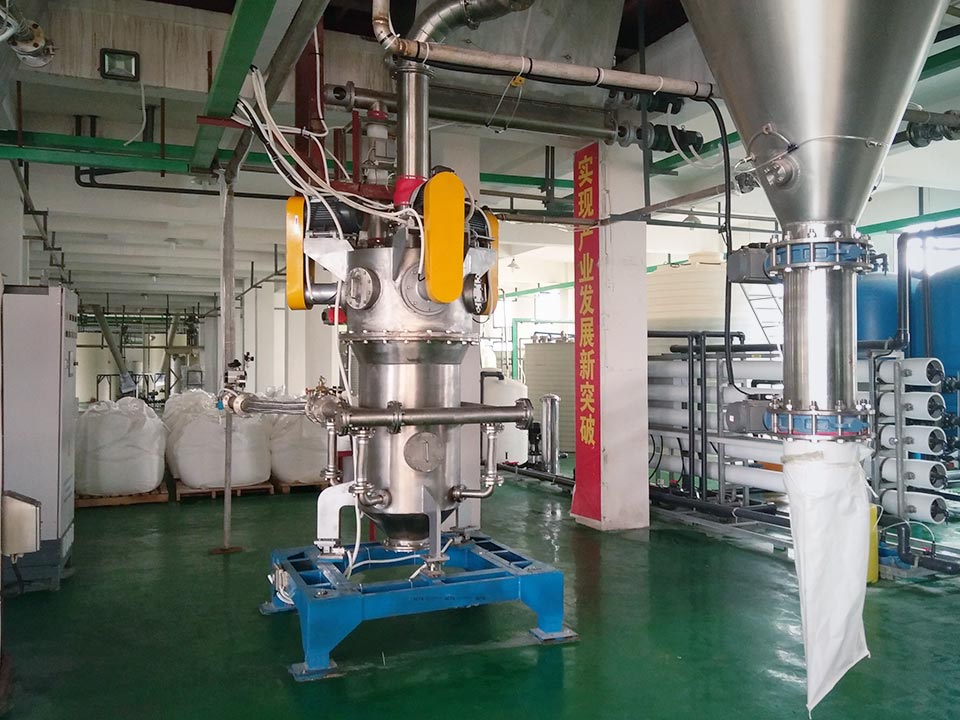
Fluidized bed jet mill works with feeding device, cyclone, bag filter and suction fan to form a complete grinding line. Compressed air flow after filtration and drying would go into milling chamber from nozzles and meet in the center area, where material would be impacted, milled and sheared.
Milled powder would go up to classifying area by airflow. The high-speed rotation of classifier wheel would separate oversize powder and fine powder. Qualified fine powder would go through the wheel impeller and output cyclone or bag filter, while oversize powder would fall to milling area to be milled again.
The fluidized bed jet mill is currently the leading model of jet mills. Compared with other pulverizing equipment, it has obvious advantages and represents the mainstream direction of jet pulverization equipment. It is widely used in chemical industry, minerals, metallurgy, abrasives, ceramics, Refractory materials, medicine, pesticides, food, health products, new materials and other industries. Some jet mills use steam as kinetic energy, which we call “steam jet mill.” Particle size could be up to 0.2μm, with stronger kinetic energy. It is usually used to treat power plant fly ash, steel slag, chemical raw materials, etc. These plants can provide sufficient steam and energy can be fully utilized.
According to the design structure, Jet Mill can be roughly divided into: fluidized bed Jet Mill (including vertical and horizontal types); Disc Jet Mill. ALPA could produce jet mill with big capacity of 10T/H, could also produce mini milling machine/small vertical mill for laboratory. Equipped with fully automatic PLC control.
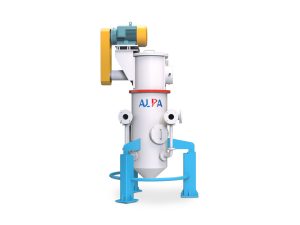
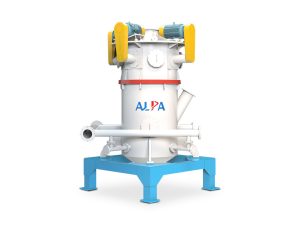
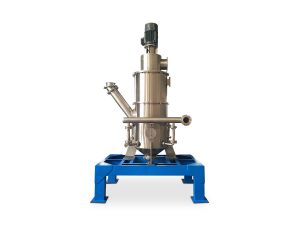
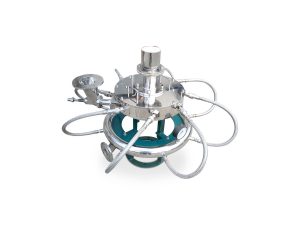
Installation and operation: Before use, check whether all fasteners of the machine are tightened. Check whether there are hard objects such as metal in the crushing chamber of the machine. Turn on the machine, confirm that the operation is normal, and put the material from the material port. When the unloader is in operation, it is strictly forbidden to reach into the exit of the unloader to prevent hand injury. The speed of the grading impeller cannot exceed the specified value, otherwise the grading wheel and motor will be destroyed. The safety valve must be checked regularly.
Overview of graphite spheroidization technology for carbon anode used in lithium battery industry
- Lithium-ion battery anode materials include flake natural graphite, mesophase carbon microspheres and petroleum coke-based artificial graphite.
- Carbon material is currently the main negative electrode material used in lithium-ion batteries, and its performance affects the quality, cost and safety of lithium-ion batteries.
- How to improve the safety of lithium-ion batteries, especially how to develop negative electrode materials that meet the requirements of power batteries, is a concern for materials companies.
- In addition to raw materials and process formulas, which determine the performance of negative electrode materials, it is also one of the important factors to provide equipment and technologies such as carbon graphite crushing, spheroidization, shaping, and classification with stable performance and high efficiency and energy saving.
Milling stage:
Whether it is artificial graphite or natural graphite, it is crushed several times through several sets of CSM710 units (the naming method of each manufacturer is different) to become a D50:20μm powder. According to the different raw materials, the number of pulverization is different: For example, large scale natural graphite is generally crushed 4-6 times, and artificial graphite is generally crushed 1~3 times.
Spheroidization stage:
Generally, they tend to use a system of CSM410 and horizontal high-precision turbo classifiers for shaping. The classifier is used to remove fine powder produced by shaping in time. According to the different raw materials, the number of shaping is different. Natural graphite generally 8-12 times of shaping, artificial graphite generally 2 to 4 times of shaping.
(After long-term process practice, we have explored and optimized different spheroidizing process schemes for natural flake graphite and artificial graphite, for your reference.)
Natural flake graphite spheroidization process
Raw materials are milled by a single set of CSM710 special milling machine, particle size of raw materials is milled to a fine powder with particle size of D50: 21-23μm, which is convenient for the next process to be spherical. Through the CSM510 type spheroidizing machine equipped with the FW260 high efficiency classifier series unit process, the particles are prepared into spheroidized graphite particles with particle size of D50: 19-20μm, and CSM410 spheroidizing machine is equipped with FW230 high efficiency classifier series unit. Change the particle size to D50: 15-17μm potato-shaped graphite particles;
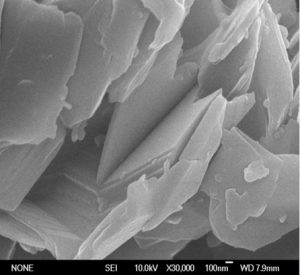
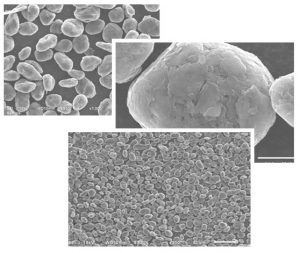
(The picture on the left is the raw material of flake graphite, and the picture on the right is the product after spheroidization of flake graphite)
Artificial graphite spheroidization process
Raw materials are uniformly sent to the CSM710 special mill single set series unit through the screw feed for ultra-fine grinding. Raw material particle size is milled to D50:23-25μm fine powder, which is convenient for the next process to be spheroidized. Through 3 sets of CSM510 type spheroidizing machines equipped with FW260 high-efficiency classifiers and several sets of series unit processes, the particles are prepared into graphite powder with particle size of D50: 19-21μm, and the required qualified potato-shaped balls are obtained through the special graphite surface modification and shaping equipment.
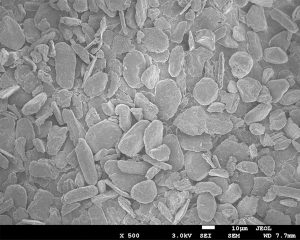
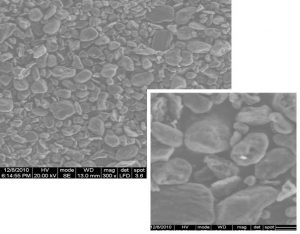
(The picture on the left is the raw material of artificial graphite carbon, and the picture on the right is the product after shaping the raw material of artificial graphite)
Comparison of milled particle size of graphite spheroidization technology
 Graphite carbon raw material
Graphite carbon raw material

Milled by CSM710

Spherical by CSM510

Shaping by CSM410
Zhang Jingjie, chairman of ALPA: realizing high value comprehensive utilization of bulk industrial solid waste is the actual demand for the healthy development of the industry
On April 25, the 2021 high level Forum on comprehensive utilization of industrial solid waste in Beijing, Tianjin and Hebei and surrounding areas (the Fifth Forum) with the theme of "industrial integration, symbiosis and regional collaborative development" was successfully held in Beijing, and the "Second National Forum on resource utilization of construction waste" was held at the same time The "2021 Forum on high value utilization of ceramic products from industrial solid waste preparation" and "2021 national technology / Equipment Exhibition on resource utilization of bulk solid waste" have also been successfully concluded.
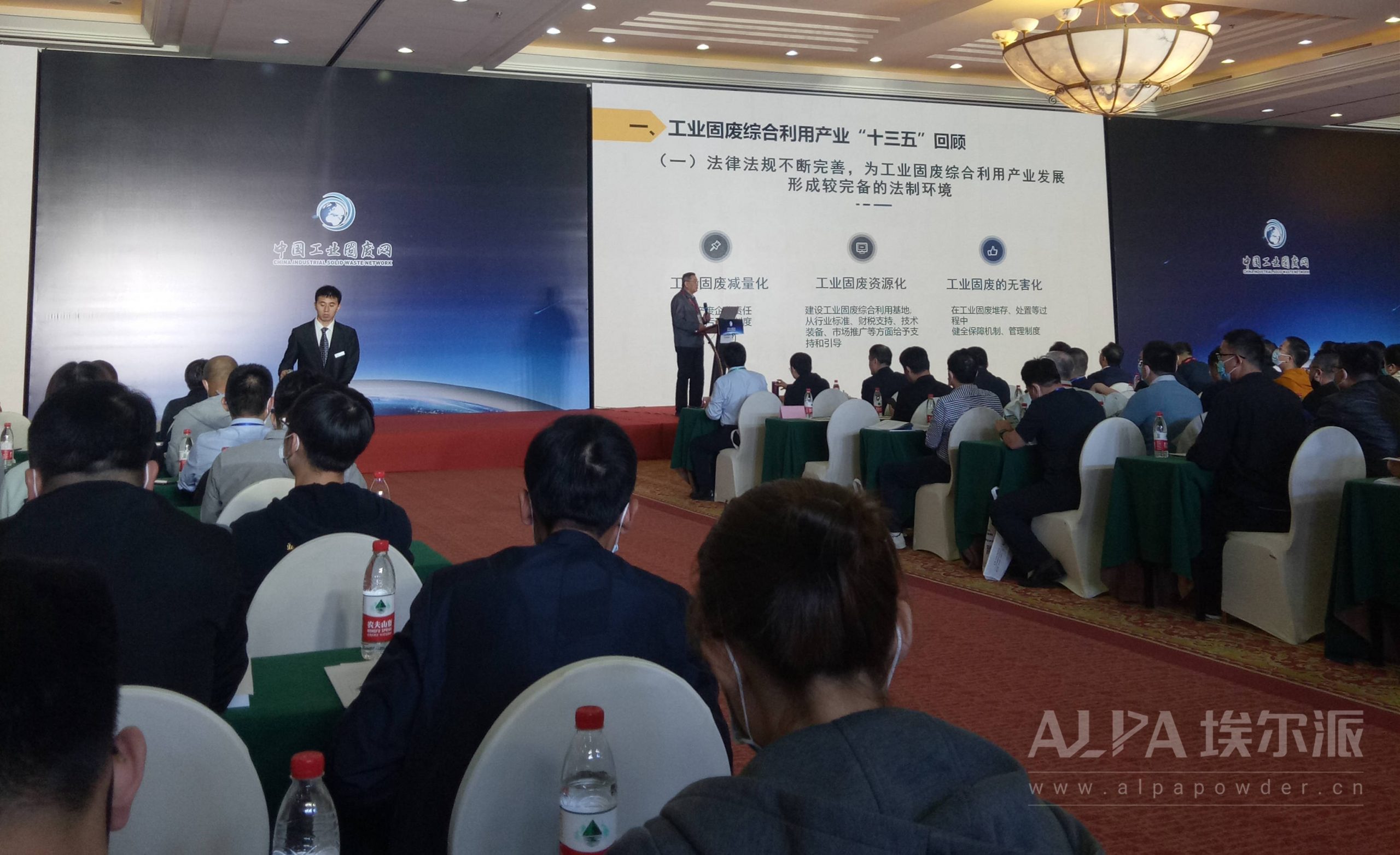
The opening ceremony of the conference was presided over by Mr. duganjie, founder of China industrial solid waste network, with more than 500 people participating in the leaders of competent departments of governments, industry experts, enterprises for the treatment and utilization of environmental protection solid waste, as well as institutions of higher learning and scientific research institutes in charge of industrial solid waste utilization. The talents gathered together to interpret the prevention and control of solid waste pollution, comprehensive utilization of resources, regional coordinated development Industry coordinated development policy. Meanwhile, the forum comprehensively interpreted the comprehensive utilization of large solid waste, green industrial development and transformation and upgrading of enterprises during the 14th Five Year Plan period. Both the producers and the users and managers benefited greatly at the conference.
Mr. Zhang Jingjie, chairman of Shandong ALPA Powder Technology Co., Ltd., was invited to attend the meeting and made an academic report entitled "high value comprehensive utilization of bulk industrial solid waste based on advanced processing and collaborative cementation technology". Taking the industrial development transformation in the new era as the benchmark, the performance characteristics of ultra-fine steel slag powder were analyzed based on the actual needs of solid waste production and utilization enterprises, This paper expounds the steel slag cascade utilization in detail from the aspects of steel slag preparation of ultra-fine powder and products, steel slag cascade utilization project, solid waste technology, main research direction in solid waste field and new industrialization technology.
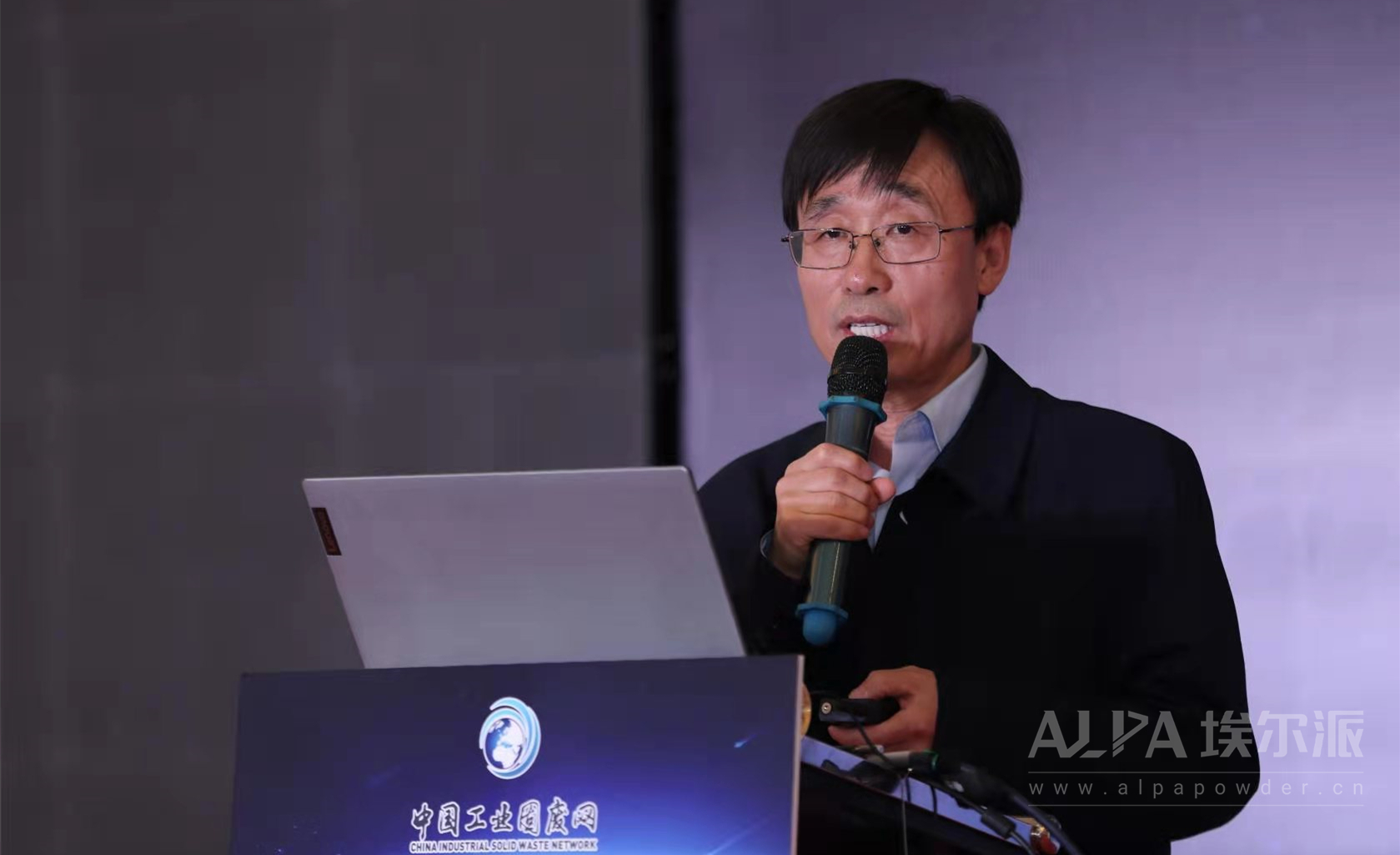
After the meeting, chairman Zhang Jingjie shared with the guests the main research directions, research achievements and new industrialization technologies of ALPA in the field of solid waste in recent two years, which triggered a heated discussion among experts and scholars on the spot. All participants agreed and appreciated this.
Since its establishment in 2010, ALPA has been focusing on technological innovation and signed the "industry university research" development plan in cooperation with a number of colleges and universities. Over the years, ALPA has continuously carried out technological innovation and achieved long-term development in the powder industry, with remarkable achievements and certain brand accumulation.
Up to now, ALPA's research projects in the field of solid waste have covered more than ten items, such as the cascade utilization of steel slag and fly ash, the high value utilization of coal gangue, the sensible heat recovery of high temperature slag and the preparation of ultra-fine powder from tailings, the enrichment and separation of valuable components from lean minerals, and the fine preparation of various bulk solid waste powders and their products. The self-developed and upgraded mechanical crusher has been widely used and praised in municipal waste incineration, industrial solid waste and other fields, and has played an important role in promoting the prosperity and development of solid waste field and environmental protection industry.
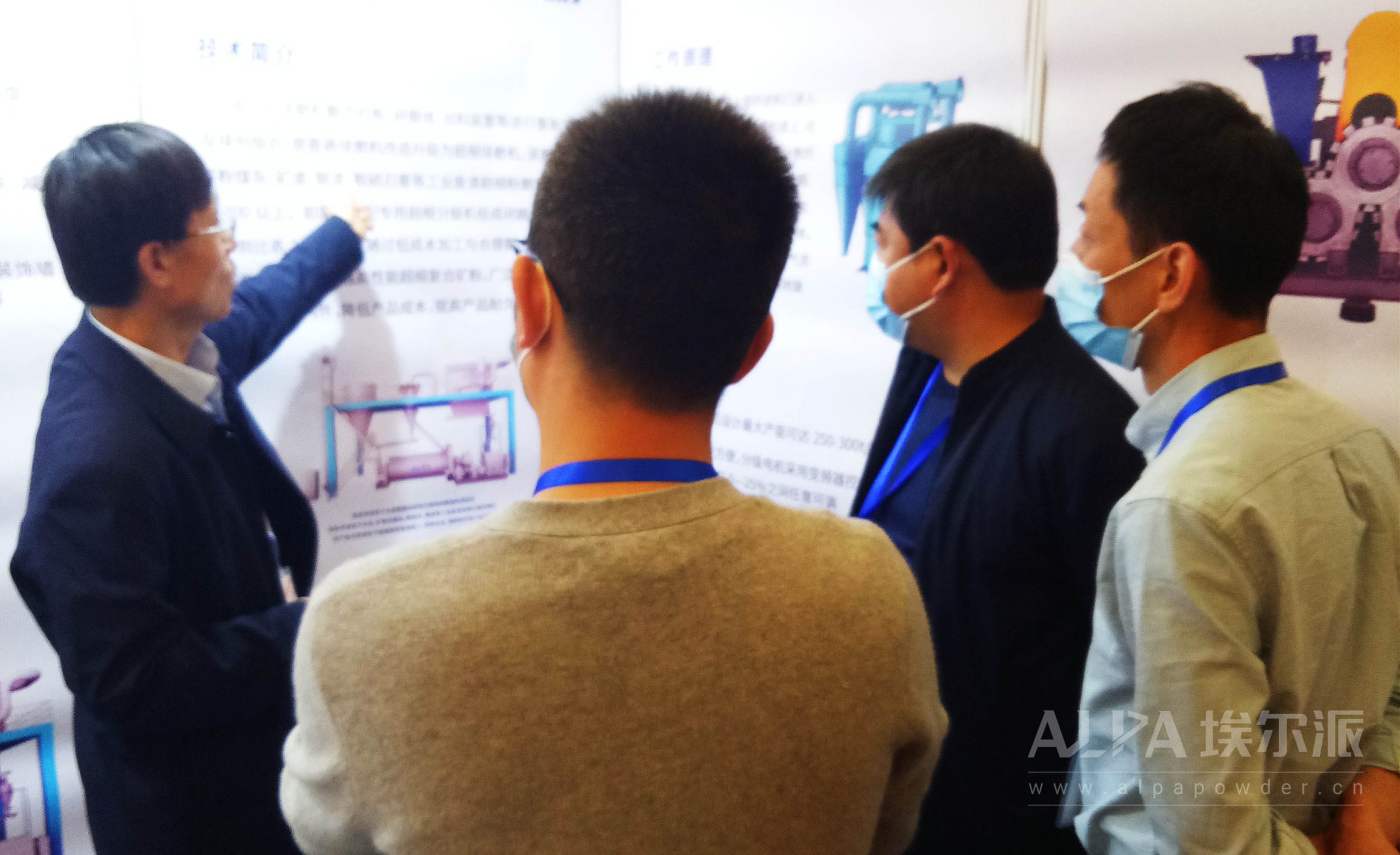
Strengthening environmental protection and reducing the risk of climate change are the necessary conditions for the development of enterprises. ALPA adheres to the road of sustainable development, and makes a high value-added comprehensive utilization of industrial solid wastes such as fly ash, slag, steel slag, tailings, lean ore and pond mud as a circular economy solution, so as to realize the transformation and upgrading of traditional industries in the direction of green development.
The 2021 Beijing-Tianjin-Hebei and Surrounding Area Industrial Solid Waste Comprehensive Utilization High-level Forum is open. ALPA Chairman Zhang Jingjie is invited to speak
In order to promote development of solid waste industry in Beijing-Tianjin-Hebei region and surrounding areas, China Industrial Solid Waste Network-Technology Achievement Transformation Platform unites Zhongguancun Green Mine Industry Alliance, Beijing-Tianjin-Hebei Tailings Comprehensive Utilization Industrial Technology Innovation Alliance, China High-tech Industrialization Research Association Mining Value-added Service Alliance, Beijing University of Science and Technology, Tsinghua University Xinxing Yuanjian Lightweight New Materials Joint Research Institute, Chinese Ceramic Society Process Petrology Branch and other industry associations, scientific research institutes, related enterprises and institutions will be held on April 24-26, 2021 The“2021 Beijing-Tianjin-Hebei and Surrounding Area Industrial Solid Waste Comprehensive Utilization (International) High-level Forum”was held at Wyndham Beijing Longcheng Hotel, and the“2021 National Bulk Solid Waste Resource Utilization Technology/Equipment Exhibition”will be held at the same time. "The 2nd National Construction Waste Resource Utilization Forum", "2021 Industrial Solid Waste Preparation Ceramic Series Products High-value Utilization Forum".

The theme of this conference is "Industrial Convergence and Symbiosis Regional Coordinated Development". Mr. Zhang Jingjie, Chairman of Alpa Powder Technology Co., Ltd., was invited to attend the exchange meeting and gave a title of "Bulky Industrial Solid Waste Based on Advanced Processing and Co-gelling Technology". Academic speech on Comprehensive Utilization of High Value.
Chairman Zhang Jingjie analyzed performance characteristics of ultra-fine steel slag powder in his speech, from the cascade utilization of steel slag and fly ash, the high-value utilization of coal gangue, the sensible heat recovery of high-temperature slag and preparation of ultrafine tailings, metallurgical slag and enrichment and separation of tailings, etc., extraction of valuable components, fine preparation of various bulk solid waste powders and their products, other solid waste research directions and new industrialization technologies will be elaborated in detail. Scholars share and discuss the high-efficiency and selective crushing of solid waste, low-cost ultra-fine grinding and classification, multi-solid waste compounding and synergistic gelation, functional modification, inorganic gelling packaging, mechanical air-pressure forming and pressure Controllable foaming and other aspects of technical research.
The forum focuses on healthy development of industrial green transformation and development, green mine construction, comprehensive industrial solid waste utilization in the new era. Starting from actual needs of solid waste production and utilization companies, it is a waste-producing enterprise, solid waste utilization technology-based unit, solid waste treatment. Equipment units, etc. build technology, information, and cooperation and exchange platforms. During the forum, award ceremony of "2021 National Industrial Solid Waste Comprehensive Utilization Most Valuable Innovative Technology Award" will be held to introduce innovative technologies with the most investment value and provide strong technical support for waste-producing enterprises.
Shandong ALPA Powder Technology Co., Ltd., as co-organizer, knows that there is a long way to go and will continue to take the lead, take promotion of powder technology progress and sound development of the industry as its own responsibility, always keep in mind "to create advanced materials with powder technology historical mission of "the future", adhering to values of "belief in compliance and symbiosis", focus on scientific research and technological innovation, further improve core equipment, optimize service levels, improve management systems, and accelerate the brand building process.
On the road of promoting the green development of industry, ALPA will also continue to increase research and development in the solid waste field, actively promote the prosperity and stable development of the solid waste field and the environmental protection industry, and resolutely implement the basic national policy of resource conservation and environmental protection, will be more advanced powder technology and higher-quality powder equipment bring to the majority of users at home and abroad, create higher benefits and market value for customers.
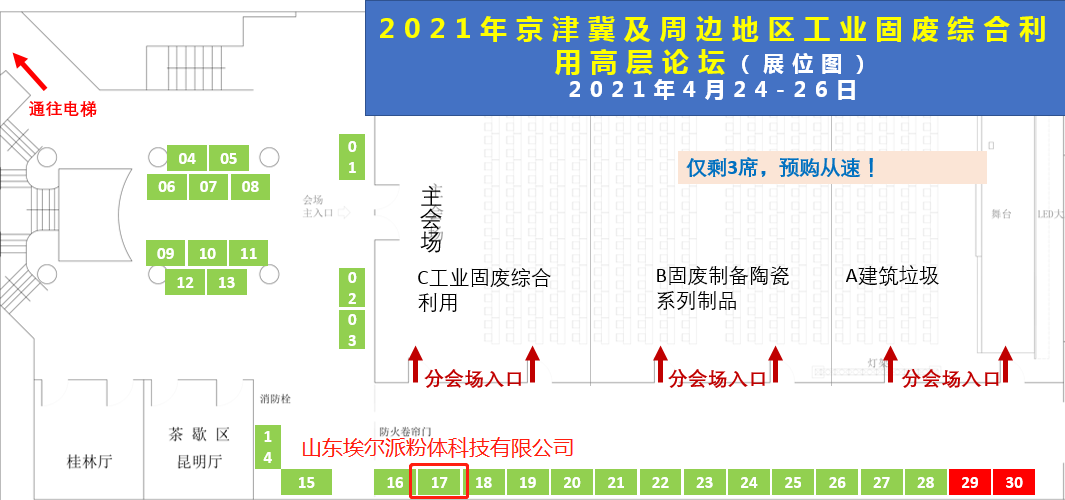
ALPA high performance machine is favored by new material enterprises
New materials are a new kind of materials with excellent special properties, which are newly discovered, artificially synthesized or obtained by optimizing and improving traditional materials. Compared with the traditional material industry, the new material industry is a basic, strategic and leading industry with intensive technology, high added value of products and large R & D investment. It has a wide range of industries and is inseparable from daily life.
With the rapid development of science and technology, all kinds of new materials are emerging, and the emergence of new materials is also pushing back the development of science and technology. As one of the indispensable technological processes in the process of new material processing and manufacturing, powder processing technology plays a vital role in the research and application of materials. Shandong ALPA Powder Technology Co., Ltd. aims at ultra refining, ultra purification, specific functions, safety and environmental protection, and provides the most front-end whole process service for the new material industry.
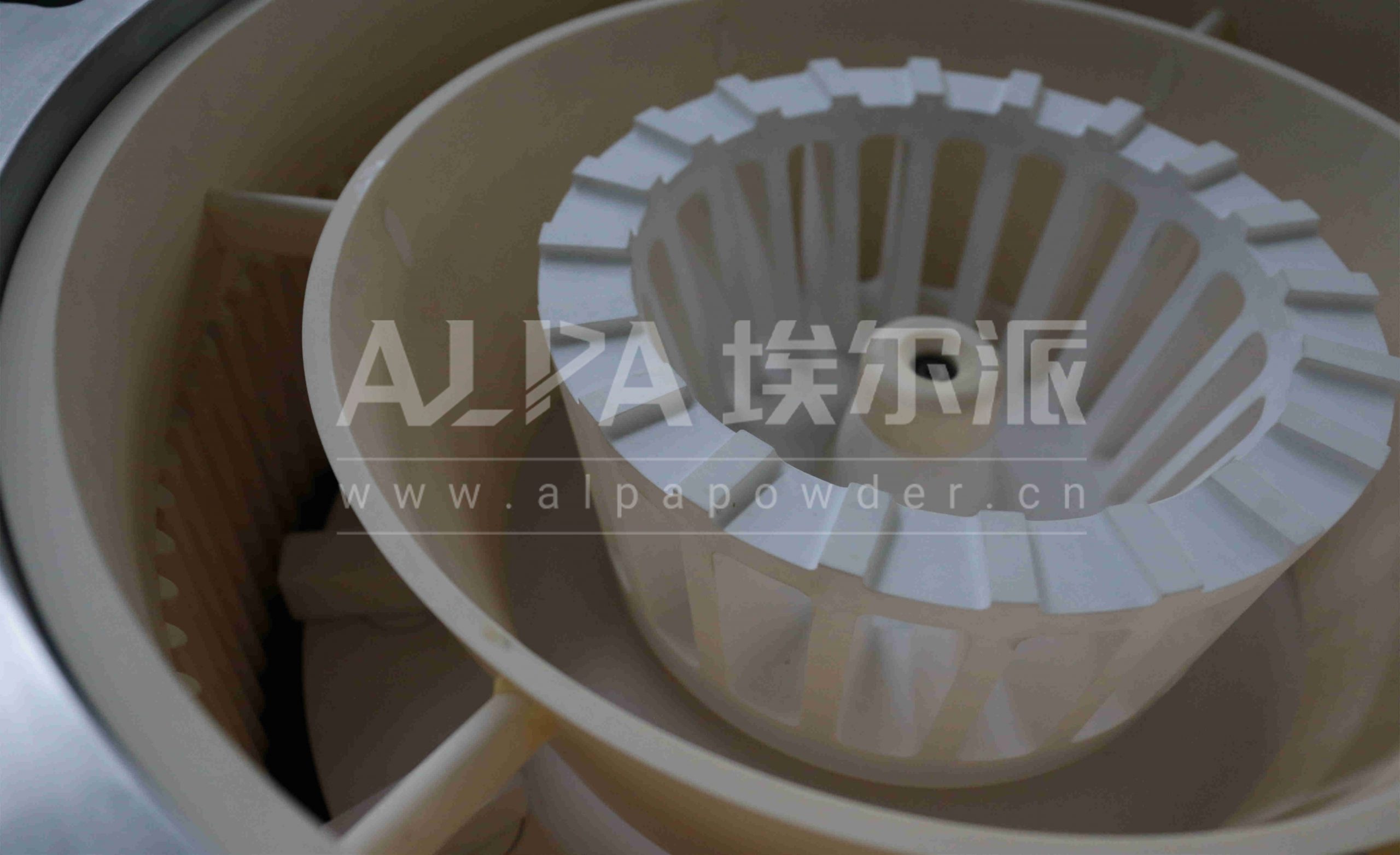
Although China's new material industry is developing rapidly, most of them are still catching up. How to quickly shorten the gap and base on the international market has become the focus of the industry. Among them, the key machine is very important, especially the superfine grinding machine used for basic steps. The grinding effect of materials directly affects the quality and production cost of new materials, so it is highly valued by enterprises in this field.
In view of the high requirements and strict standards for new materials, ALPA focuses on the introduction of three in one air flow crushing and grading machine for laboratory, aiming at the needs of crushing experiments conducted by scientific research institutions, laboratories of colleges and universities, enterprise research institutes and laboratories due to new product development and material tests. The machine is small in volume, three in one combined structure, compact in structure and easy to operate, and can be flexibly used for airflow crushing, airflow classification and mechanical crushing. ALPA can provide more targeted machine support and technical solutions for customers according to material characteristics, product use, laboratory research direction and demand.
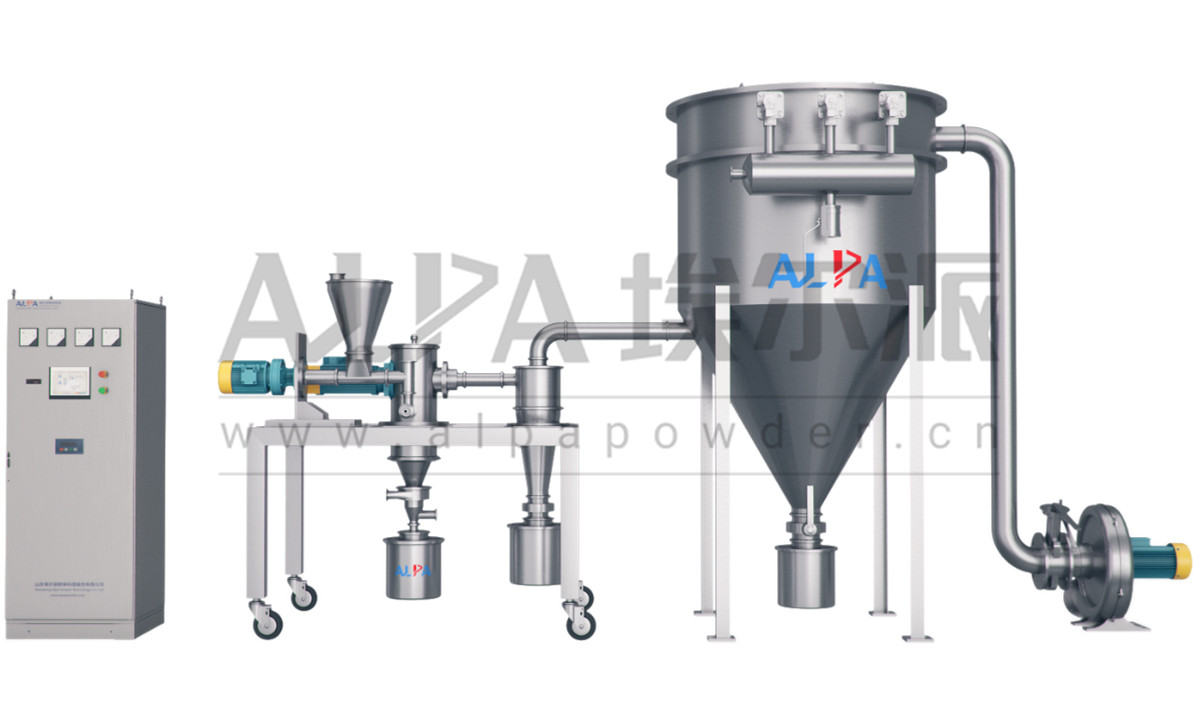
Three in one air classifier_ System layout
So far, ALPA's three in one laboratory air crushing and grading machine has been applied in many well-known university material laboratories and national scientific research institute laboratories, and has reached friendly cooperation with a well-known chemical enterprise in Shanghai, a well-known lithium company in Tibet and other industry leading enterprises. At the same time, ALPA has also entered Chengdu, Chongqing, Jiangsu and other cities Hunan and many other high-tech material enterprises of high-quality supplier system. This not only fully reflects the high quality of ALPA's products and services, but also proves ALPA's strong comprehensive strength. With its outstanding performance in cooperation, ALPA has been widely praised by customers and quickly gained a firm foothold in the industry market.
In today's world, with the rapid development of scientific and technological revolution, the new material industry is changing with each passing day, and the speed of industrial upgrading and application upgrading is accelerating. Since the 12th Five Year Plan, the domestic new material technology has made great progress. China's new material industry has been growing from scratch, and has become a real material power, but it is not a material power, which shows that China's new material industry is in a critical period from big to strong.
With the formulation of various policies and development goals, new material industry will usher in new development opportunities. As a leader in powder technology industry, ALPA will also actively explore new powder technology, improve the efficiency of machine, reduce energy consumption and increase added value, and help customers to develop a larger market.

